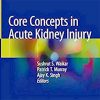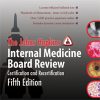Splitting Ventilators to Provide Titrated Support to a Large Group of Patients
emcrit.orgCOVID-19 can out-strip the number of mechanical ventilators available to us. This has led to interest in using a single ventilator to support multiple patients. This post will review the theory and evidence regarding this (with the admission that I don’t have experience with this).
Patients with COVID-19 appear to be relatively responsive to PEEP. Of course, PEEP is merely one way to increase the mean airway pressure – which is the most important variable affecting lung recruitment. For profound hypoxemia, inverse ratio ventilation may be used to increase the mean airway pressure even further.
Inverse ratio ventilation involves increasing the inspiratory time, so that the patient is spending most of the time in the inspiratory phase (inspiratory time > expiratory time).
Inverse ratio ventilation is generally not used because it’s uncomfortable, but in this context patients will be deeply sedated anyway.
The overall concept here is similar to APRV – trying to maintain an “open lung” with ongoing application of gentle amounts of pressure (rather than abrupt high-pressure recruitment maneuvers).
This general concept has been demonstrated using animals and lung models. However, depending on exactly how the model is constructed and what gauge is used to determine “success,” different results can be obtained.

















